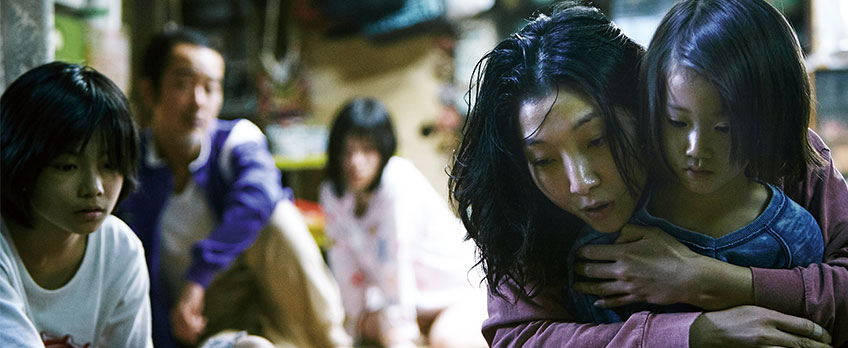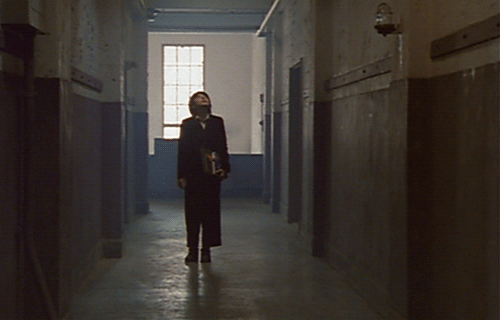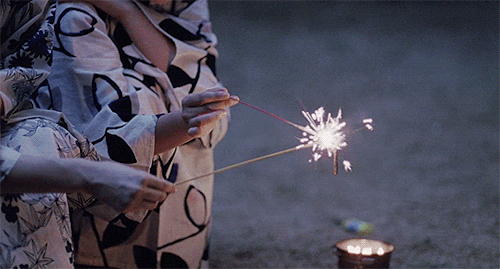The Beauty of the Familiar: Hirokazu Kore-eda’s imitations of life

By Valerie Ng
A conversation, a dance, a meal, a tram ride — these are the memories that the people of Hirokazu Kore-eda’s film After Life choose to take with them after they die, to watch, on repeat, for eternity. They are ordinary moments, which the film’s purgatoric employees then re-enact with a slapdash ingenuity, forming clouds from cotton wool, dropping cherry blossoms from small nets, using a portable fan to simulate a summer breeze. These moments are in microcosm what Kore-eda employs in his actual films, eliciting the poignancy of the familiar, playing on a very similar theme — the ordinary turned extraordinary, by mere selection.

The tangibility of Kore-eda’s pictures can exist without any need of narrative, characters, dialogue or action. Through the colouring and texture of 35mm film, he muffles Japan with full, luxurious hues, evoking beautifully the feeling of a city when the sun is setting, or of cherry blossoms in full bloom, or of the reflection of light on people’s faces. His films conjure vividly a sense of place, of climate, of sound — in After the Storm, the arid exhaustion of summer heat in Shinoda’s small danchi flat seems to reverberate off the screen in minute, potent heatwaves. The shifting seasons in MIFF’s Shoplifters, seen through the subtle alterations of lighting, furniture, meals, and clothing are more indicative of the passage of time than the narrative itself. These imitations of the real world seem to travel, from shot to shot, with a steady immutable inertia, giving us the feeling that, even if the characters do not remain, then the places will, long after the credits roll.

Kore-eda shows the beauty in the mundane — the way the weather turns, the way food sizzles in hot oil, the way an elderly woman collects small curios from the garden and places them one by one on a large wooden table. His careful selection of these moments often creates a unique, almost meditative experience. The handheld urgency of his early cinematography seems to have transgressed into a quieter sense of tranquillity, with the camera almost always stationary or engaged in a slow, horizontal glide. His music is simple and unintrusive. Of his characters, Kore-eda says, “I simply want to look at people as they are.” Attention is placed obsequiously into what is in front of the lens, giving birth to slight inflections of reality, slight moments of deep truth that they are revealed so quietly that it makes any realisation more hard-earned, and more hard-hitting. His films shutter modestly from scene to scene and then pounce, unexpectedly — there is a small, powerful unearthing of profundity — a word, a question, a movement — and you feel the sudden urge to cry.

The most ubiquitous constant of normal life is, then, what Kore-eda chooses to extrapolate, and what occupies most of his films. That is the notion of family, which he proves to preclude any concrete or singular definition. Kore-eda dissects and dismembers this concept over and over again, shedding preconceptions film by film, such that nothing material remains. The youngest sister in Our Little Sister shares no past with her siblings; in Still Walking one family member is long dead; the protagonist of After the Storm lives separate from his ex-wife and child; blood ties do not exist between the people of Shoplifters and Like Father Like Son. And yet they all share some sort of undisputable connection. This connection, though untranslatable, can be best described as some sort of ghostly familiarity, a solidarity, an understanding that by some unknown, arbitrary force, they have been, and will remain, bound. In Like Father Like Son, one character says: “That’s what family is, they look like you even if you live apart.” His son retorts, “It’s not that simple.”

It’s a profound statement, and not one easily rationalised. But it’s obvious, all around us. After watching Like Father Like Son, I catch the public transport home from the cinema. At the train station, most people are alone, listening to music or on their phones. But some are not. A group of teenage girls chatter and take photos against the station wall. An old man and woman stand together in silence. A woman bends down to listen to a toddler. A baby traces the eyebrows of the lady holding him. Out on the street, a woman with a newspaper walks a dog. A man lodges a toddler on his arm. At the bus stop, a 20-year-old walks shoulder to shoulder with his middle-aged counterpart. On the bus, a woman talks quietly to a boy in a scout uniform. They both wear glasses.
Valerie Ng is a writer and participant in this year’s MIFF Critics Campus.